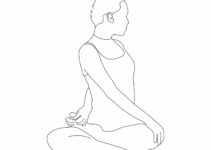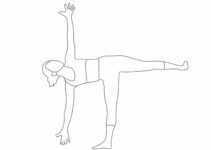What is the meaning of Sukhasana?
Sukhasana is a Sanskrit word comprised of Sukh, which means ‘pleasure’, joy, comfort, and easy, and asana, which means ‘yoga pose’. Sukhasana aims to provide concentration, stability, peace, and calmness of mind. The easy yoga pose provides a comfortable and stable position to the body to make the mind steady for practising Dharana, Dhyana, and Samadhi. There are yoga poses which fall into this group: Siddhasana, Padmasana, Vajrasana, and Swastikasana. This is the easiest meditative pose, which can be practised irrespective of all age groups, and is especially suitable for the older. Since the posture tends to comfort one, it is also known as comfort pose, pleasant pose, or decent pose. It is pronounced as suk-HAS-anna.

Sukhasana drawbacks
The easy yoga pose has many physical, mental, and spiritual benefits. However, it has one primary drawback. Most of the body’s weight is supported by the small contact area between the floor and the buttocks. After some time, this area soon becomes a little painful. However, this can be overcome to a degree by using a cushion under the buttocks. The other meditative asanas have a larger area of contact between the floor, and the body weight is supported partly by the buttocks and the legs, which reduces aches and pains.
Sukhasana philosophy & origin
The simple crossed-leg Hath yoga pose is widely used in meditation by Hinduism and Buddhism. Sukhasana is a Sanskrit-derived word wherein Sukh indicates pleasure and asana means posture. It has been mentioned in many essential yoga texts (Granth). It has been mentioned in the 19th-century book Sritattvanidhi and 4th-century Darshana Upanishad. According to Ramana Maharshi, this is the most appropriate yoga pose for enlightenment.
How to do sukhasana step by step?
The straightforward technique and instructions for performing Easy pose yoga are given below.
- Sit with the legs facing forward in front of the body.
- Fold the left leg under the right thigh.
- Then, place the right foot under the left thigh.
- Hold your head, neck, and spine upright comfortably.
- Place your hands either on your knees or in your lap. Close your eyes. Relax your whole body.
Sukhasana precautions
The contraindications and cautions of sukhasana are given below
- It shouldn’t be practice in case of a knee injury.
- Avoid in case of sciatica.
- It also shouldn’t be practised in sacral ailments.
- It must not be practised in case of a slipped disc.
What are the benefits of Sukhasana?
- Meditative pose: This is the easiest and one of the best meditative yoga poses.
- Reduces stress: Being a Dhyana pose helps balance the body and mind. It regulates hormonal imbalances in the body and reduces emotional conflict, neurosis, and anxiety.
- Calms the brain: The yoga pose helps to soothe the brain.
- Good for spinal health: During the easy yoga pose, the spine likes to be straight and upright, strengthening the spine and back.
- Knees and ankles stretch: It also gives adequate stretch to the ankles and knees, thus good for the health of these body regions.
- Good for the nervous system: It balances the central nervous system and the parasympathetic nervous system.
- Strengthening the back: The regular practice of the yoga pose ensures a more muscular and steadier back.
- Depression: This has a very soothing influence on the brain and can help to relieve ailments like migraines, epilepsy, and depression.
Top facts about Sukhasana
- This is the oldest of all yoga poses, including padmasana.
- Sukhasana is the suited sitting posture for beginners.
- It is one of the best yoga to practice pranayama and meditation.






Nice explanation